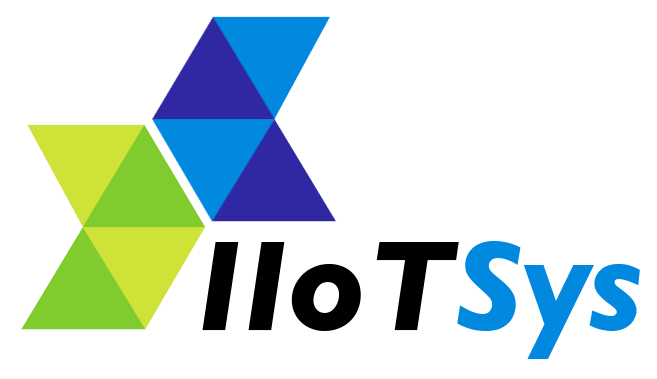What is Industrial IoT?
Industrial Internet of Things (IIoT) refers to the integration of interconnected sensors, devices, and systems in industrial environments to collect, exchange, and analyze data for enhanced efficiency, productivity, and decision-making. Unlike consumer IoT, IIoT focuses on applications in manufacturing, energy, transportation, and other industrial sectors. It leverages real-time data to optimize processes, predict maintenance needs, and improve operational reliability.
Key features of IIoT include:
- Real-time monitoring: Tracks equipment performance and environmental conditions.
- Predictive maintenance: Uses data analytics to anticipate equipment failures.
- Automation: Enables smart control of industrial processes.
- Data-driven insights: Improves decision-making through analytics.
Devices Needed for IIoT with RS232, RS485, Ethernet, WiFi, and 4G
To implement IIoT, especially with legacy industrial systems using RS232 or RS485 interfaces, specific devices are required to enable connectivity over modern networks like Ethernet, WiFi, or 4G. Below is an overview of the essential components:
1. RS232/RS485 to Ethernet Converters
- Purpose: These devices bridge legacy serial devices (using RS232 or RS485) to modern Ethernet networks, allowing older equipment to integrate into IIoT systems.
- Functionality:
- Converts serial data (RS232/RS485) to TCP/IP packets for Ethernet communication.
- Enables remote monitoring and control of legacy devices.
- Examples:
- Serial-to-Ethernet gateways (e.g., Moxa NPort, Lantronix UDS).
- Support for protocols like Modbus RTU to Modbus TCP.
- Use Case: Connecting a legacy PLC (Programmable Logic Controller) with RS485 to an Ethernet-based IIoT platform.
2. RS232/RS485 to WiFi Converters
- Purpose: These devices enable wireless connectivity for serial devices, eliminating the need for physical Ethernet cables.
- Functionality:
- Converts RS232/RS485 data to WiFi (802.11 b/g/n).
- Supports secure communication with WPA2 encryption.
- Ideal for environments where cabling is impractical.
- Examples:
- Serial-to-WiFi modules (e.g., USR-WIFI232, Advantech WISE modules).
- Use Case: Wireless monitoring of sensors in a factory with RS485 interfaces.
3. RS232/RS485 to 4G Gateways
- Purpose: These gateways connect serial devices to cellular 4G networks, enabling remote access in areas without Ethernet or WiFi infrastructure.
- Functionality:
- Converts serial data to 4G LTE for cloud connectivity.
- Supports remote data collection and control via cellular networks.
- Often includes GPS for location tracking in mobile applications.
- Examples:
- Industrial 4G routers (e.g., Teltonika TRB145, Sierra Wireless AirLink).
- Use Case: Remote monitoring of equipment in a mining site using RS232 interfaces.
4. IIoT Edge Devices
- Purpose: These are smart devices that process data locally before transmitting it over Ethernet, WiFi, or 4G.
- Functionality:
- Collects and preprocesses data from RS232/RS485 devices.
- Runs analytics or machine learning models at the edge.
- Communicates with cloud platforms (e.g., AWS IoT, Azure IoT).
- Examples:
- Industrial edge gateways (e.g., Siemens IoT2040, Raspberry Pi with serial modules).
- Use Case: Real-time data processing in a smart factory.
5. Network Infrastructure
- Ethernet Switches: For reliable wired connectivity in industrial environments.
- WiFi Access Points: For robust wireless coverage in large facilities.
- 4G Routers: For cellular connectivity in remote or mobile applications.
- Cloud Platforms: To store, analyze, and visualize data (e.g., Microsoft Azure, Google Cloud IoT).
Why RS232 and RS485 in IIoT?
- RS232: A serial communication standard for short-distance, point-to-point connections (e.g., between a computer and a device).
- RS485: Supports longer distances and multi-device communication, ideal for industrial environments with multiple sensors or controllers.
- Many legacy industrial systems still use these protocols, necessitating converters to integrate with modern IIoT networks.
Benefits of Using Ethernet, WiFi, and 4G in IIoT
- Ethernet: Provides high-speed, reliable, and secure wired connectivity.
- WiFi: Offers flexibility and mobility, reducing cabling costs.
- 4G: Enables connectivity in remote or mobile setups, ensuring data access from anywhere.
Conclusion
Industrial IoT transforms traditional industries by enabling smart, data-driven operations. By using RS232/RS485 to Ethernet, WiFi, or 4G converters, legacy equipment can seamlessly integrate into modern IIoT ecosystems. These devices, combined with edge gateways and robust network infrastructure, empower industries to achieve real-time monitoring, predictive maintenance, and operational efficiency.




